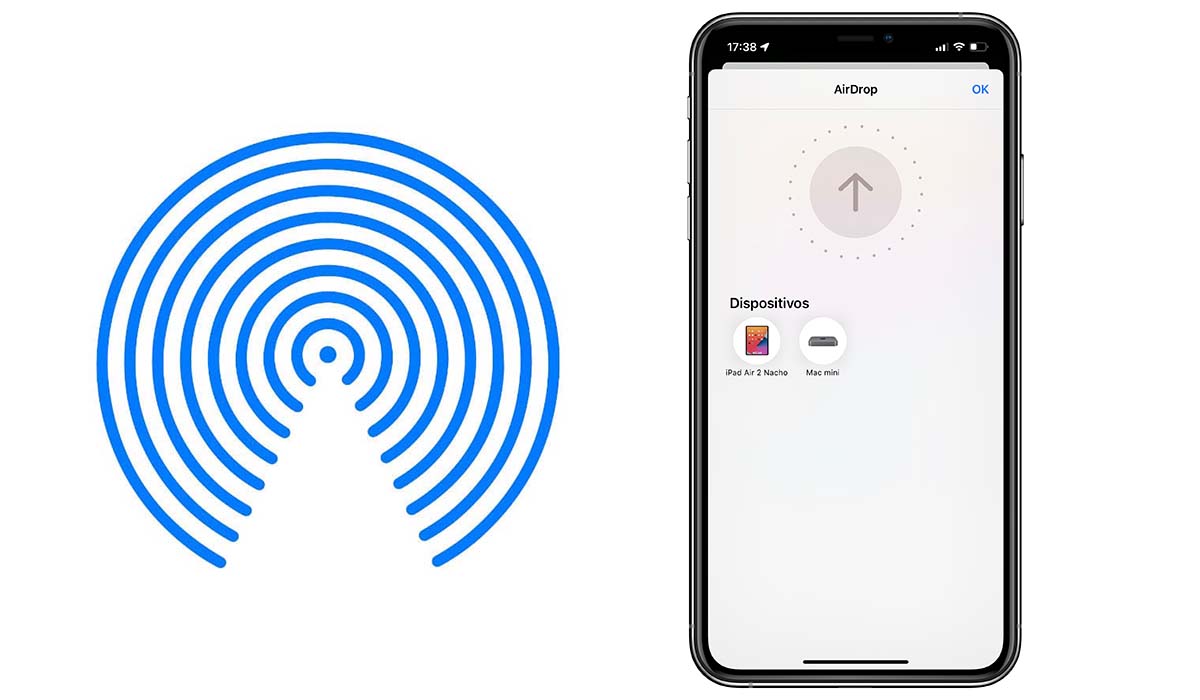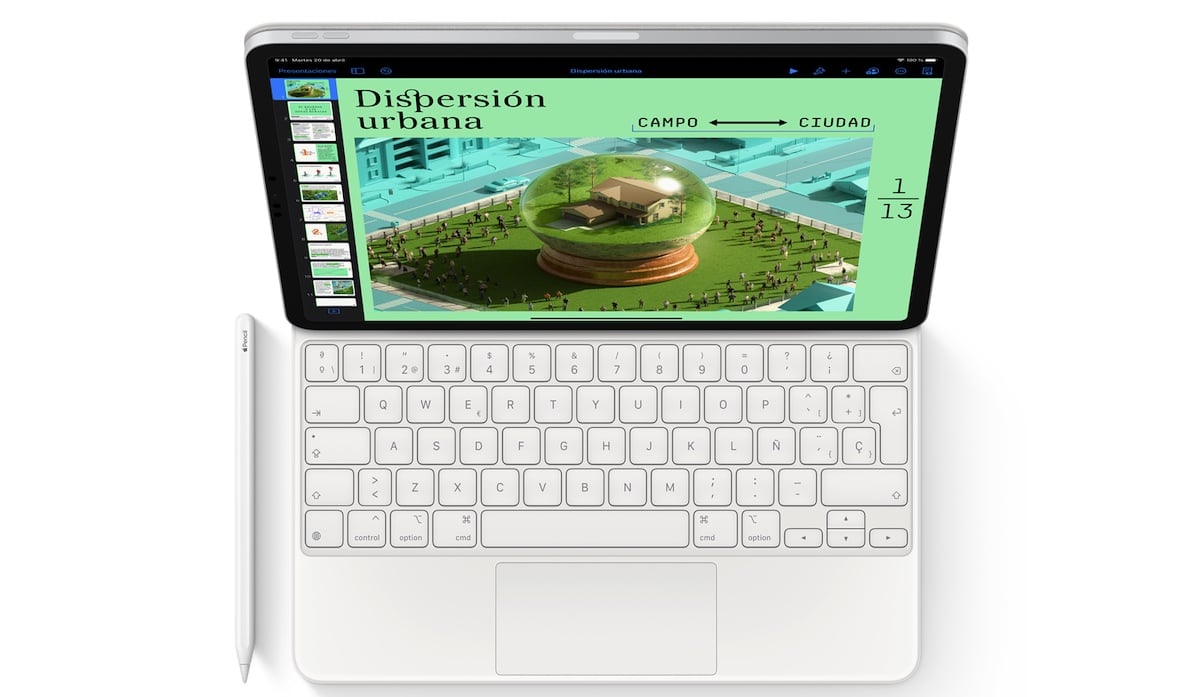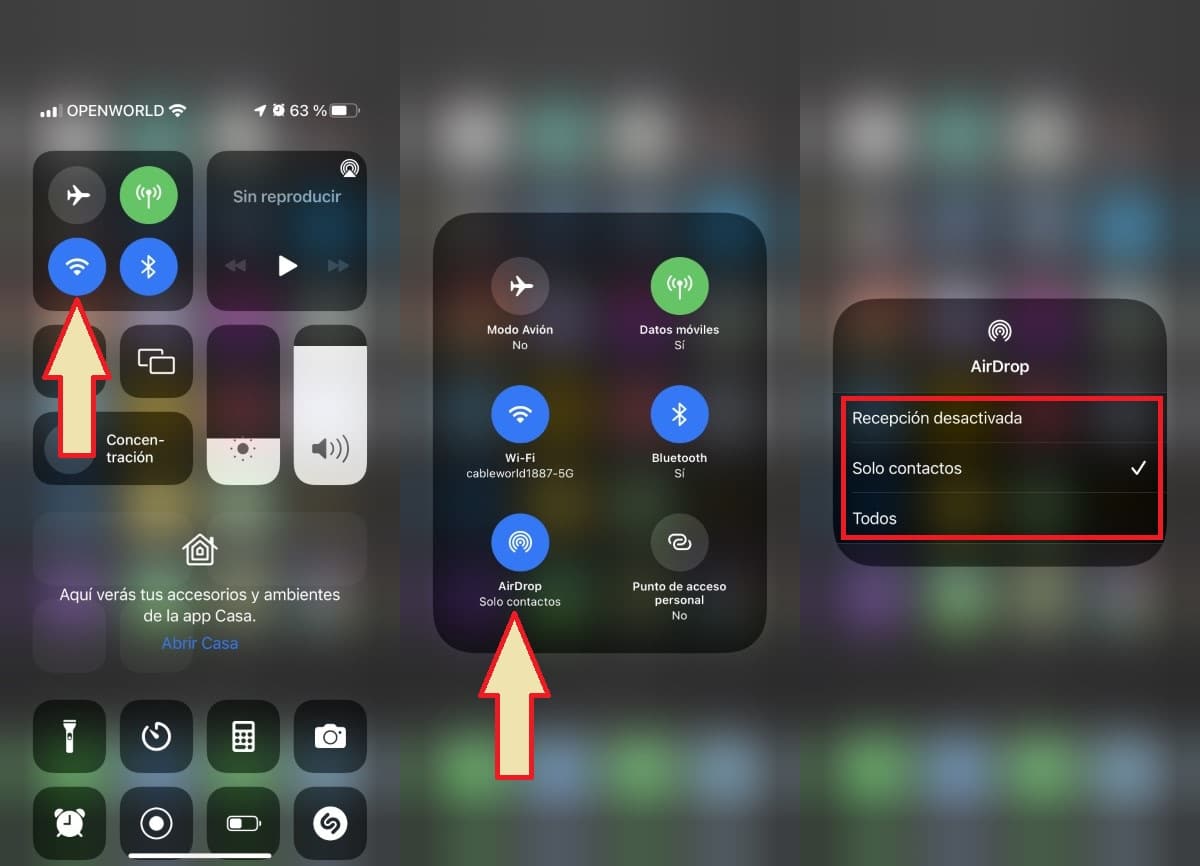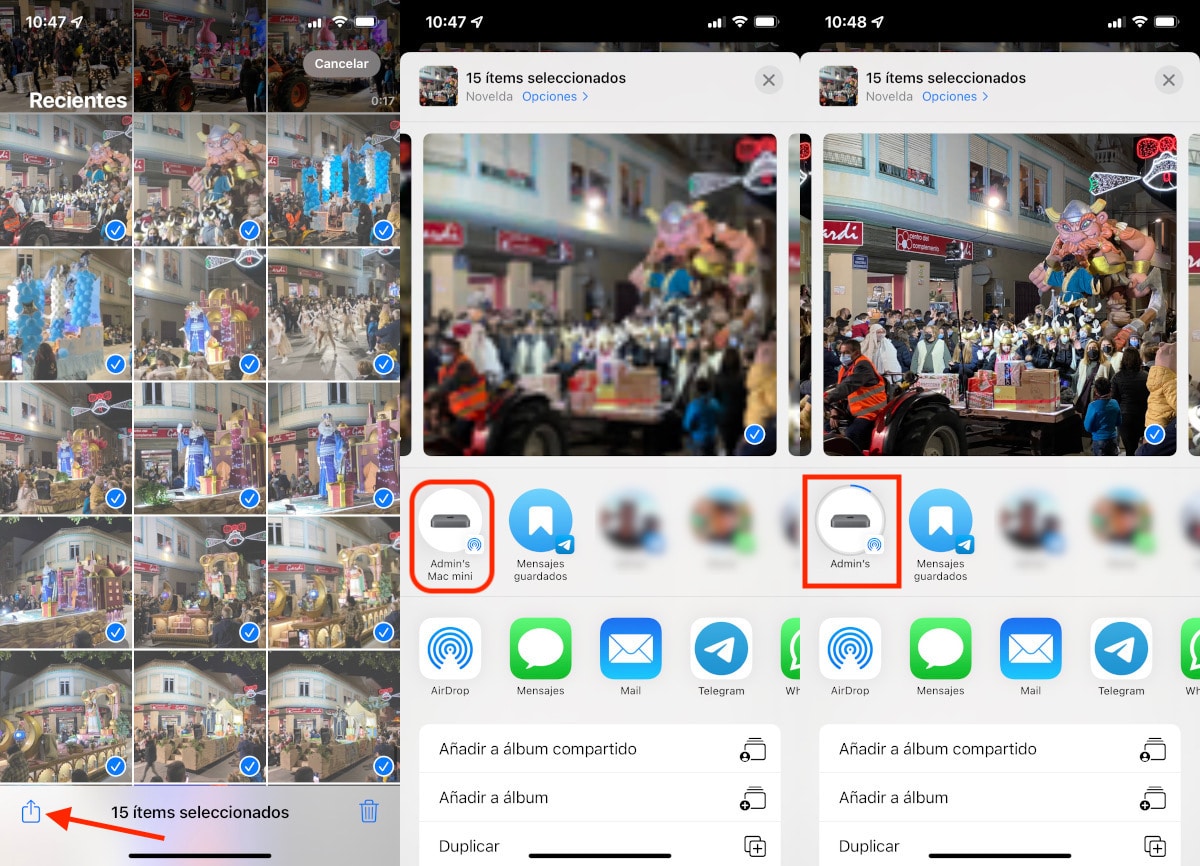
If you want to know what it is and how to use airdrop to get the most out of it, you have reached the article you were looking for. AirDrop is a proprietary Apple technology, so it is only available on devices released by Apple.
What is AirDrop?
As I have commented above, AirDrop It is a proprietary Apple technology that the Cupertino-based company launched on the market in 2011 and that allows users to share any type of file.
An internet connection is not necessary, since this technology uses both the Wi-Fi and Bluetooth connection to send the content.
AirDrop works in a very similar way to what was traditionally used to share data between phones (before the advent of smartphones) but with a much faster transmission speed.
Despite being much faster than traditional Bluetooth connections, it is not ideal for sending large files, such as videos, or a large number of images together.
What devices are compatible with AirDrop

Apple introduced AirDrop in 2011. However, as it is a technology that uses both Wi-Fi and Bluetooth, Apple had the possibility to add this functionality in the devices that it had already launched on the market.
However, not all older devices can share files between iPhone / iPads and Mac. Depending on the version of iOS and macOS that manages them, they can share files with all models of Mac and iPhone / iPad or only with Mac devices or iPhone/iPad.
If your device is managed by iOS 7 and is a:
- iPad 4th generation and later – iPad Pro 1st generation and later – iPad Mini 1st generation and later
- iPod Touch 5th generation and later
You will only be able to share files between iOS devices.
If your Mac is powered by OS X 7.0 Lion and is a:
- Mac Pro from early 2009 with the AirPort Extreme card and models from mid 2010 and later.
- All MacBook Pro models after 2008 except the 17-inch MacBook Pro.
- MacBook Air after 2010 and later.
- MacBooks released after 2008 or newer excluding white MacBook
- iMac from early 2009 and later
You will only be able to share files between Mac computers.
If your iPhone/iPad is powered by iOS 8 or later and your Mac is powered by OS X 10.0 or later and is a:
- Phone: iPhone 5 and later
- iPad 4th generation and later – iPad Pro 1st generation and later – iPad Mini 1st generation and later
- iPod Touch: iPod Touch 5th generation and later
- MacBook Air Mid 2012 and later – MacBook Pro Mid 2012 and later
- iMacs from mid 2012 and later
- Mac Mini from mid 2012 and later
- Mac Pro from mid 2013 and later
You can share files between iPhone/iPad and Mac and vice versa.
What kind of files can be sent with AirDrop
AirDrop does not care about the format of the files that we can send. With AirDrop we can send any file format, regardless of whether the recipient of the file has an application installed to open it or not.
Regarding the maximum file size. Apple does not specify any maximum size limits when sending files using AirDrop.
However, in older (slower) devices, the process to send a large number of images or videos can take so long that the iOS device goes to sleep if we are not careful to avoid it by periodically touching the screen.
Where files received with AirDrop are stored

If it is an iPhone that receives the files:
Photographs and videos
All photos and videos that are natively supported by iOS will be stored in the Photos app. If it is a video format that is not compatible with iOS, the device will ask us which application we want to open it with and will store it in it.
Archives
If iOS is able to recognize the file format, it will open it automatically. If this is not the case or we have different applications compatible with that format, it will ask us with which application we want to open it and it will store it inside.
Links to web pages
In this case, iOS will use the device's default browser to open the link it has received.
If it is a Mac that receives the files
Archives
Whether it's images, videos, documents, spreadsheets, presentations... all files sent via AirDrop to a Mac are automatically stored in the Downloads folder.
Links to web pages
As in iOS, a Mac that receives a link to a web page via AirDrop will automatically use the default browser on the computer to open it.
How to set up AirDrop

There are 3 modes that we can select in AirDop:
Reception disabled
If we select this option, absolutely no one in our environment will be able to locate us to share content with us.
Only contacts
By activating this option, only the contacts that we have stored in our address book will be able to locate us in our environment to share content with us.
All
This is the least advisable option since anyone in our environment will appear on their devices to share content.
Fortunately, since we have to confirm receipt of the file, we will not receive content of any kind that is unwanted.
How to use AirDrop between iPhone/iPad and iPhone/iPad

- We select the file that we want to share and click on the Share button.
- We wait a few seconds until the names of the iOS devices located around us are displayed.
- To send the file, we must click on the device to which we want to send the file.
How to use AirDrop between two Macs
- We go to the file that we want to share, press the right mouse button and select Share > AirDrop.
- A new window will open where all the Mac, iPhone and iPad around us will be displayed (depending on the mode they have configured).
- To send the file, we just have to click on its name.
How to send a file from a Mac to an iPhone/iPad or vice versa

Depending on which device we are going to send it from (we have shown you the processes above), we have to select the destination device, be it an iPhone/iPad or Mac.
Change device name
If you want to change the name with which your devices are recognized via AirDrop, we must access the section Settings > General > Information.
In section Name, we must modify the name that appears for the one you want it to be displayed.